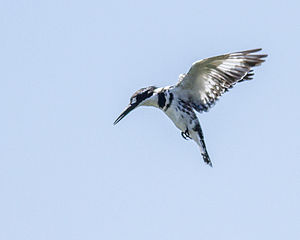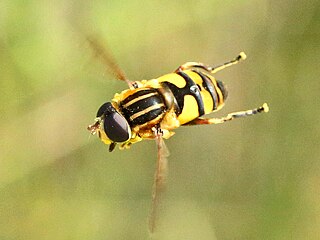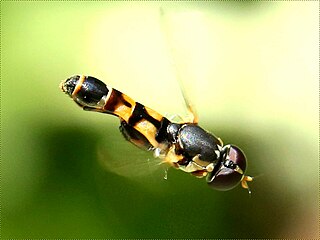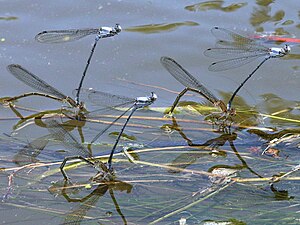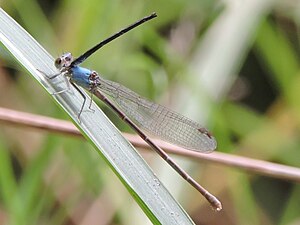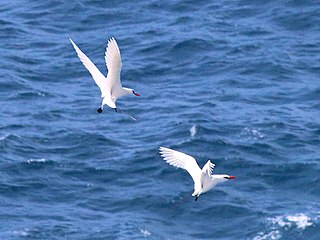Hover (behaviour)

Hovering is the ability exhibited by some winged animals to remain relatively stationary in midair. Usually this involves rapid downward thrusts of the wings to generate upward lift. Sometimes hovering is maintained by flapping or soaring into a headwind; this form of hovering is called "wind hovering", "windhovering", or "kiting". [1] [2]
True hoverers
Hummingbirds
Hummingbirds hover over flowers to obtain nectar, flapping their wings at up to 70 beats per second. [3]
Bats
Like hummingbirds, fruit bats and nectar bats hover over flowers while feeding on fruits or nectar. Comparison between bats and hummingbirds has revealed that these animals exert similar amounts of energy relative to body weight during hovering: hummingbirds can twist their wings more easily and are more aerodynamic, but bats have bigger wings and larger strokes. [4] [5]
Kingfishers
Small Kingfishers such as Belted kingfisher may hover over water before diving in to catch fish. [6] Larger species such as Ringed kingfisher are too heavy to hover for more than a few seconds. [7]
Moths
Sphinx moths
Some sphinx moths (family Sphingidae) are known as hummingbird moths for their ability to hover over flowers while nectaring. Moths are relatively heavy insects and sometimes hang on to the flower with their forelegs as they hover. [8]
Clearwing moths
Some clearwing moths (family Sesiidae) also hover while nectaring [9] [10] or even puddling. [11] Females may also hover to inspect ovipositing sites. [12]
Hoverflies
Hoverflies are flies that often hover over the plants they visit. This hovering behaviour is unlike that of hummingbirds since they do not feed in midair. Hovering in general may be a means of finding a food source; in addition, male hovering is often a territorial display seeking females,[13] while female hovering serves to inspect ovipositing sites. [14] [15] [16]
- Adult hoverflies often hover over the plants they visit
Odonata
Odonata is an insect order that includes dragonflies and damselflies. They are strong aviators renowned for their acrobatic flights, including the ability to hover, usually for a short pause during their ceaseless territorial patrols. [17]
Dragonflies
In addition to short hovers while cruising, female dragonflies may hover over the water before or during oviposition, males may also hover-guard their mate at this time. [18]
-
Sedge darner male
-
Green darner male
-
Common whitetail female
-
Black saddlebags pair hovering over oviposition site
-
Black saddlebags male hover-guarding his mate
- female dragonflies hover-ovipositing
-
-
Damselflies
Some male damselflies hover in front of females or over the oviposition site during courtship; sometimes females also hover in response. [19] [20] After mating, males may hover-guard their mate by either circling over her or by hovering while attached to her in tandem. Males hover-guarding in tandem do not need wings at all to remain suspended in the air; they are held aloft by clasping their mate with their abdomen, and can maintain their position even when the head and thorax are removed by predators. [21] [22]
-
Ebony jewelwing male hover-patrolling
-
Powdered dancer male hover-patrolling
-
Powdered dancer males hover-guarding
-
Powdered dancer male posthumous hover-guarding
Wind hoverers
Raptors
Many birds of prey such as kestrels, harriers, and members of the Buteo genus can "windhover" by facing the wind. [23] [24] [25] Elanine kites also engage in "windhovering"; this behaviour is also called "kiting" due the common names of this genus. [26] [27] [28]
Tropicbirds
Tropicbirds can "windhover" by flying into the wind. Red-tailed Tropicbird pairs may even fly backwards and circle each other during courtship displays. [29] [30]
-
hovering/flying backwards
-
circling courtship
References
- ^ Ehrlich, Paul R.; Dobkin, David S.; Wheye, Darryl. "Hovering Flight". stanfordbirds.
- ^ Lekwa, Steve (Feb 22, 2021). "Kiting is a common activity for Iowa's raptors". Ames Tribune.
- ^ "The Hummingbird Wing Beat Challenge". National Audubon Society. April 22, 2020.
- ^ "Stanford engineers study hovering bats and hummingbirds in Costa Rica". Stanford news. September 26, 2018.
- ^ Susan Milius (October 15, 2018). "How nectar bats fly nowhere". Science News.
- ^ "Belted Kingfisher Megaceryle alcyon". National Audubon Society.
- ^ "Ringed Kingfisher Megaceryle torquata". Cornell University.
- ^ "Hummingbird Moth (Clearwing Moth)". Mass Audubon.
- ^ BROWN, LARRY N. and; MIZELL, III, RUSSELL F. (1993). "THE CLEARWING BORERS OF FLORIDA (LEPIDOPTERA: SESIIDAE)". TROPICAL LEPIDOPTERA. 4 (3). Florida Online Journals: 1–21.
- ^ Potter, Daniel (2 October 2014). Capinera, J.L. (ed.). "Clearwing Moths (Lepidoptera: Sesiidae)". Encyclopedia of Entomology. Springer, Dordrecht: 928. doi:10.1007/978-1-4020-6359-6_5123.
- ^ "Melittia celebica". iNaturalist.
- ^ "Pyropteron icteropus". iNaturalist.
- ^ Collett, T.S.; Land, M.F. (September 1978). "How hoverflies compute interception courses". Journal of Comparative Physiology. 125 (3). Springer-Verlag: 191–204. doi:10.1007/BF00656597.
- ^ Almohamad, Raki; Verheggen, François J.; HaubrugeUniv, Éric (2009). "Searching and oviposition behavior of aphidophagous hoverflies (Diptera: Syrphidae): a review". Biotechnologie, Agronomie, Société et Environnement. 13 (3). ResearchGate: 467–481.
- ^ Vera Strader. "Hover Flies, a Gardener's Friend" (PDF). University of California Agriculture and Natural Resources.
- ^ Peter Chen (December 6, 2023). "Allograpta exotica ovipositing - Allograpta exotica - Female". Bugguide. Iowa State University.
- ^ David Britton (Mar 7, 2023). "Dragonflies and damselflies - Order Odonata". Australian Museum.
- ^ McMillan, Victoria E. (June 1991). "Variable mate-guarding behaviour in the dragonfly Plathemis lydia (Odonata: Libellulidae)". Animal Behaviour. 41 (6). Elsevier B.V.: 979–987. doi:10.1016/S0003-3472(05)80636-0.
- ^ The BugLady (December 14, 2022). "River Jewelwing Damselfly". University of Wisconsin-Milwaukee.
- ^ Guillermo-Ferreiraa, Rhainer; Neissc, Ulisses Gaspar; Hamadad, Neusa; Bispo, Pitágoras C. (2 October 2014). "Behavior of the Amazonian damselfly Chalcopteryx scintillans McLachlan (Zygoptera: Polythoridae) and comments on its morphological distinction from C. rutilans (Rambur)". International Journal of Odonatology. 17 (4). Worldwide Dragonfly Association: 251–258. doi:10.1080/13887890.2014.983189.
- ^ Marla Garrison (2011). "Damselflies of Chicagoland A Photo Field Guide, version 2" (PDF). The Field Museum, Chicago.
- ^ "Nature Note: Dragonflies and Damselflies". Lake Champlain Committee. August 31, 2009.
- ^ "Kestrel Hovering: A Complete Guide". Birdfact. March 15, 2023.
- ^ JOSHUA RAWLEIGH (April 4, 2023). "How does the windhover hover?". Indiana Public Media.
- ^ Caswell, Brandon (Dec 29, 2021). "Hovering raptors in Iowa". The Gazette.
- ^ "Black-winged Kite Elanus caeruleus". Cornell Lab of Ornithology.
- ^ "Black-shouldered Kite Elanus axillaris". Cornell Lab of Ornithology.
- ^ "Northern Harrier Circus hudsonius". National Audubon Society.
- ^ Nicole Bouglouan. "Red-tailed Tropicbird Phaethon rubricauda". Oiseaux-Birds.
- ^ "Red-tailed Tropicbird Phaethon rubricauda". Cornell Lab of Ornithology.







